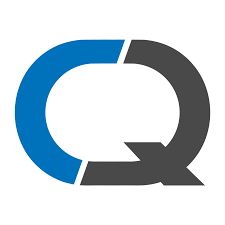The Benefits of Automating Your Requirements Traceability Matrix Process

Strong 8k brings an ultra-HD IPTV experience to your living room and your pocket.
In the fast-paced world of product development, ensuring that all requirements are thoroughly tested and met is critical. A Requirements Traceability Matrix (RTM) plays a vital role in this process by mapping requirements to test cases, ensuring nothing is overlooked. Automating the RTM process can bring numerous benefits, enhancing efficiency, improving accuracy, and ensuring regulatory compliance. This blog explores the advantages of automating the Requirements Traceability Matrix process and its impact on product design, risk mitigation, and compliance.
Understanding the Requirements Traceability Matrix
What is a Requirements Traceability Matrix?
A Requirements Traceability Matrix (RTM) is a document that links requirements throughout the validation process. It ensures that all requirements defined for a system are tested in the test protocols. The RTM helps in tracking the status of requirements and ensures that they are duly tested.
Importance of the Requirements Traceability Matrix
The RTM is essential for ensuring that all requirements are covered during testing, which is crucial for successful Product Design. It helps in identifying any gaps, ensuring that all customer and regulatory requirements are met. This traceability is vital for maintaining quality and ensuring compliance with industry standards.
The Need for Automation in RTM
Challenges of Manual RTM Processes
Manual RTM processes can be time-consuming and error-prone. Managing extensive requirements and their corresponding test cases manually can lead to inaccuracies, missed requirements, and delays in the product design cycle.
Benefits of Automation
Automating the Requirements Traceability Matrix process can significantly enhance efficiency and accuracy. Automation tools can manage vast amounts of data, ensure accurate mapping of requirements to test cases, and streamline the entire process, leading to better product design and faster time-to-market.
Enhancing Product Design with Automated RTM
Streamlining Product Design Processes
Automated RTM tools can seamlessly integrate with product design processes, ensuring that all requirements are tracked and tested. This integration helps in identifying design flaws early, reducing rework and enhancing the overall quality of the product.
Improving Collaboration and Communication
Automation facilitates better collaboration and communication among cross-functional teams. It ensures that all stakeholders have access to up-to-date information, fostering a collaborative environment that is crucial for successful product design.
Risk Mitigation through Automated RTM
Identifying and Managing Risks
An automated Requirements Traceability Matrix helps in identifying potential risks early in the product development process. By ensuring that all requirements are tracked and tested, automation aids in identifying gaps that could pose risks, allowing for timely Risk Mitigation.
Enhancing Risk Management Strategies
Automation provides a structured approach to risk management. It enables continuous monitoring and updating of requirements and test cases, ensuring that risks are managed effectively throughout the product lifecycle.
Ensuring Regulatory Compliance with Automated RTM
Meeting Regulatory Requirements
Regulatory Compliance is critical in many industries, and an automated RTM ensures that all regulatory requirements are met. It provides a clear traceability path from requirements to test cases, demonstrating compliance with industry standards and regulations.
Simplifying Audit Processes
Automation simplifies the audit process by maintaining comprehensive and organized records. It ensures that all documentation is up-to-date and readily available, making it easier to demonstrate compliance during audits.
Best Practices for Implementing Automated RTM
Choosing the Right Tool
Selecting the right automation tool is crucial for successful implementation. Organizations should evaluate tools based on their specific needs, features, and integration capabilities with existing systems.
Training and Support
Effective implementation requires proper training and support. Organizations should invest in training programs to ensure that employees are proficient in using the automation tool and understand its benefits for product design and risk mitigation.
Continuous Improvement
Continuous monitoring and improvement are essential for maintaining the effectiveness of the automated RTM process. Organizations should regularly review their processes and make necessary adjustments to ensure ongoing compliance and efficiency.
Conclusion: Why ComplianceQuest Management Software is Essential for Business in 2024
In 2024, the demands for efficient product design, effective risk mitigation, and stringent regulatory compliance are higher than ever. Leveraging automated tools like ComplianceQuest Management Software is crucial for meeting these demands. ComplianceQuest offers comprehensive solutions for automating the Requirements Traceability Matrix process, ensuring that all requirements are accurately tracked and tested. With robust features for managing product design, risk assessment, and regulatory compliance, ComplianceQuest helps organizations streamline their processes, improve efficiency, and achieve sustainable success.
By automating the Requirements Traceability Matrix process with ComplianceQuest, businesses can enhance their product design, effectively manage risks, and ensure compliance with regulatory requirements. This not only improves the overall quality of products but also reduces time-to-market, giving organizations a competitive edge in the market. Investing in ComplianceQuest Management Software is a strategic move for businesses aiming to stay ahead in a rapidly evolving industry landscape.
Note: IndiBlogHub features both user-submitted and editorial content. We do not verify third-party contributions. Read our Disclaimer and Privacy Policyfor details.


